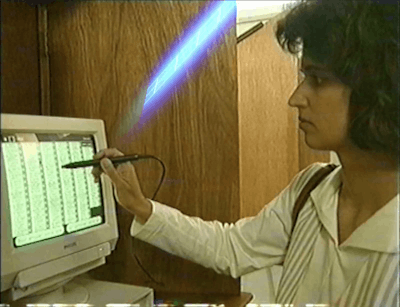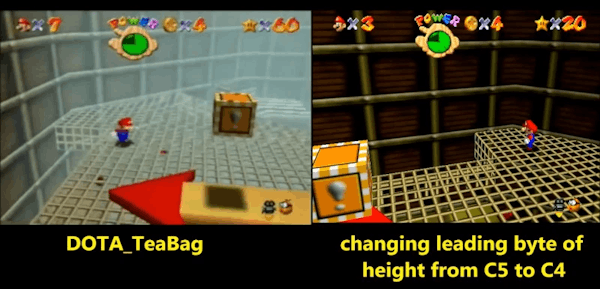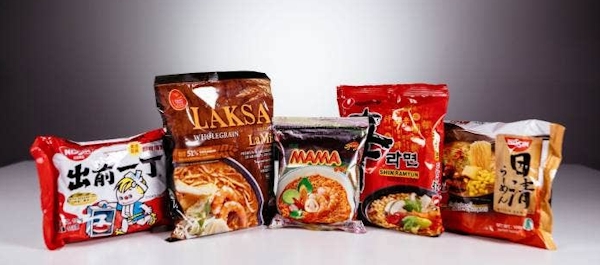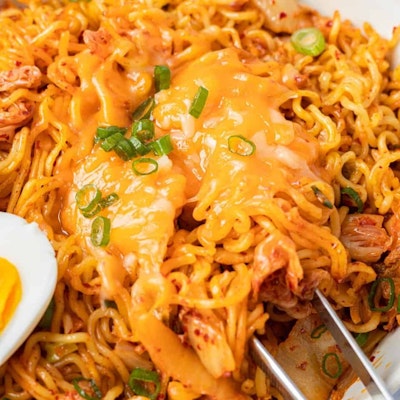Welcome back to PRISM, the SCISOC newsletter! In this week's newsletter, we look at the interesting phenomenon known as 'bit flips' and how, despite their rare occurrences, they've managed to impact us significantly. In our Fun Corner, we take a look at different ways you can turn your plain, repetitive instant ramen into something more exciting through extra additions you can make! Happy reading, and SCISOC hopes your first week back went fantastically! |
|
|
UNSW Science Society Presents: A Crack @ Telehealth ft. Eucalyptus The thought of a new term got you unmotivated? In desperate need of something that will stimulate your brain cells and pave your way for a HD wam? Well, SCISOC has got you covered! SCISOC’s upcoming case crack in partnership with Eucalyptus gives you the chance to solve problems linked to telehealth in a two-hour span and later present your work to a panel of judges. During the case crack, judges will offer assistance with solving the problem provided. As usual, there are prizes for the winners of the competition, through the problem-solving skills and information gained from this experience are invaluable, so give it a shot! Event Link: https://www.facebook.com/events/966313590595127?ref=newsfeed P.S Registrations for the competition close on the 27th of September. UNSW Science Society Presents: If You Are The One SCISOC’s very own If You Are The One, is giving YOU the chance to find love in quarantine! Just like the widely loved TV series, a candidate will be asked a series of questions by contestants and after the candidate provides their response, contestants are given the opportunity to turn-off their camera. A turned off camera signifies the contestant is no longer interested and this continues until all questions have been asked. If there are multiple contestants still remaining, the candidate will select the most suitable contestant. If you find yourself interested, sign up ASAP as the event kicks off 26th of September! |
Remember to follow us on our SCISOC Facebook page to keep up to date with our upcoming events! |
|
|
Sometimes the things that can wreak havoc on everyone are the things we often overlook and can’t see. In the past few decades, we’ve come a long way in the progression of technology, yet with all the failsafe mechanisms an electronic device could have, there is still one underlying issue that the best engineers and scientists in today’s world cannot resolve - the bit flip. Also known as a soft error, a bit flip occurs when cosmic rays from outside of Earth create charged particles that come in contact with the memory of an electronic device and ‘flip’ a bit inside, meaning that a 0 in the memory changes to a 1, or vice versa. The effects are often benign, given that on average these cosmic rays flip about 4 bits per gigabyte of Random Access Memory (RAM) per month on your electronic devices, but other times a bit flip can be more dangerous such as causing malfunctions in cars or even planes. Below, we’ve got some cases of these soft errors occurring and the extent to which it has affected our everyday lives. |
|
|
eVoting in Belgium With the decision to embrace the advancement of technology, Belgium moved from paper-based to electronic voting in 1991. Over the next decade, this ‘eVoting’ decision piled up doubt in the population, even having the legality of electronic voting being raised before the European Court of Human Rights in 2000. Once this voting system became more refined over the next few years with a new ticketing system introduced for electronic voting, it seemed like Belgium’s controversial decision paid off in the long run. However, on the 18th of May 2003, there was a problem whereby one candidate reportedly got 4096 extra votes, which caused great confusion as the votes exceeded the population. The most reasonable explanation for such error was a soft error, caused by a cosmic ray which the voting system did not have protection against. This is just one of many Single-Event Upsets (SEU) that the world has faced and shows us the gravity of how a single-bit flip could disrupt a large-scale event. |
| |
|
Super Mari o64 Speedrun Despite cosmic rays flipping bits being an exceptionally rare occurrence, this happened to a Super Mario 64 speed-runner in the middle of a competition. This flip happened when one of the participants suddenly found Mario flying upwards and phasing through to a higher level. The analysis seemed to indicate that such a result could only happen when Mario’s height value is flipped by one bit (C5837800 to C483700). Although there might be some other possible explanation for the bit-flip, so far none has been found and cosmic flipping remains the leading theory. |
|
|
| Qantas A far more deadly example of the effects of cosmic bit flips is shown through the 2008 Qantas flight (QF78) from Singapore to Perth. When in flight, one of the three air data inertial reference units started providing incorrect data to the flight computer. In response to the incorrect data, the autopilot disengaged automatically and the plane plunged out to the sky for a terrifying 23 seconds. The pilots managed to regain manual control of the plane after that. The incident injured nearly a third of all passengers on board. |
|
|
Preventing such cosmic particles from interacting with the chips is nearly practically impossible (needing a three-meter thick concrete block). However, there is one such solution where there are multiple chips “voting” on the outcome since cosmic flipping affecting two simultaneous results is vanishingly negligible. As our dependence on technologies become greater and electronic chips become more powerful and smaller, the effects of cosmic bit flips will become more noticeable. |
|
|
Breakfast, lunch, dinner, and all meals in between can be satisfied with one packaged instant dish: ramen! We’ve collected a variety of ways that you can enjoy this beloved noodle dish, whether it’s improving your own secret recipe or trying these methods out for yourself! Improving an already delicious creation such as ramen involves mainly adding to it, which makes life a lot easier for those of us who aren’t too skilled at cooking beyond pouring hot water into a pot. Here are a few things you can add: |
 |
Vegetables We all know ramen is not considered a healthy food, but adding fresh or frozen veggies in your ramen soup adds a bit of roughage to your starch. Fresh vegetables that are quick-cooking (spinach, cabbage, etc.) can be added into the soup right after serving, whereas longer-cooking vegetables (bok choy, broccoli etc.) can be added into the water as the noodles are cooking. Frozen vegetables such as corn and peas are also an alternative—simply toss them in after defrosting under running water. |
|
|
Proteins Spam Chicken/steak Char Siu Eggs
Adding proteins to your ramen can take your ramen to a whole new level. Ramen is basically made up of fat and starch as the noodles are dehydrated through deep-frying, and the sachets of seasoning are not enough to fill you up. Eggs are a great source of protein, are cheap and can be cooked differently for different tastes—check out our previous publication on '4 different ways to cook your eggs' for some top-notch tips. Adding meat to ramen is a great way to repurpose leftover meat like steak, chicken or sausages for extra protein and achieves a tender-chewy texture. Ingredients such as sliced ham or spam give your ramen extra saltiness and richness to the broth and make it even more hearty when you’re eating at home. |
| |
|
Condiments/sauces: Seasonings Ketchup/Tomato Sauce
For ramen, there are a variety of sauces and condiments you can add to your soup base to make it tastier and unique. Specifically for Korean ramen with soup, you can add gochujang (red pepper paste) or doenjang (soybean paste) from your local Korean/Asian grocery store to enhance the flavours. Other substitutes can be the popular Chinese chilli sauce Lao Gan Ma to make your ramen spicier! Another popular method is adding just a tablespoon of ketchup or tomato sauce to your soup paste to give it that sweet, slightly acidic taste. |
|
|
| Miscellaneous: Cheese: With spicy ramen flavours such as the infamous Samyang Fire Chicken, a slice of cheese is a popular method of mellowing out the spice for those who can’t take the fire. Shredded cheese works just as well, so long as you put it on your noodles when they’re steaming hot so it can melt! Milk: This is another way to reduce the spice in your ramen and give your ramen a creamier taste. Here’s a recipe by Aaron and Claire on YouTube detailing how exactly to cook your ramen with milk! Rice cakes, fish cakes, frozen snacks: Rabokki is a popular alteration to ramen, by adding spicy rice cakes and fish cakes to your noodles, or vice versa, adding noodles to your tteokbokki. However, this isn’t the only way you can change up your ramen. Frozen dumplings are also another item you can add to your ramen to give it more substance! |
|
|
There are only a few ways to make your ramen noodles more fulfilling and tasty if you want to change things up once in a while! There are heaps of other ways to use ramen noodles such as ramen pizza or ramen fried rice as listed in this 30-Day Ramen Challenge video, but to make things easier, we’ve only included some amateur chef tips for you students at home. We hope this is helpful and is the stepping stone towards you getting onto Masterchef Australia! |
|
|
UNSW Science Society is proud to announce our continued partnership with GradReady through 2021. GradReady provides GAMSAT Preparation courses for anyone looking to pursue Medicine after they graduate.
This process starts earlier than you think, so if you’re studying medical science or just have that passion, check out what they have to offer! |
|
|
| |













